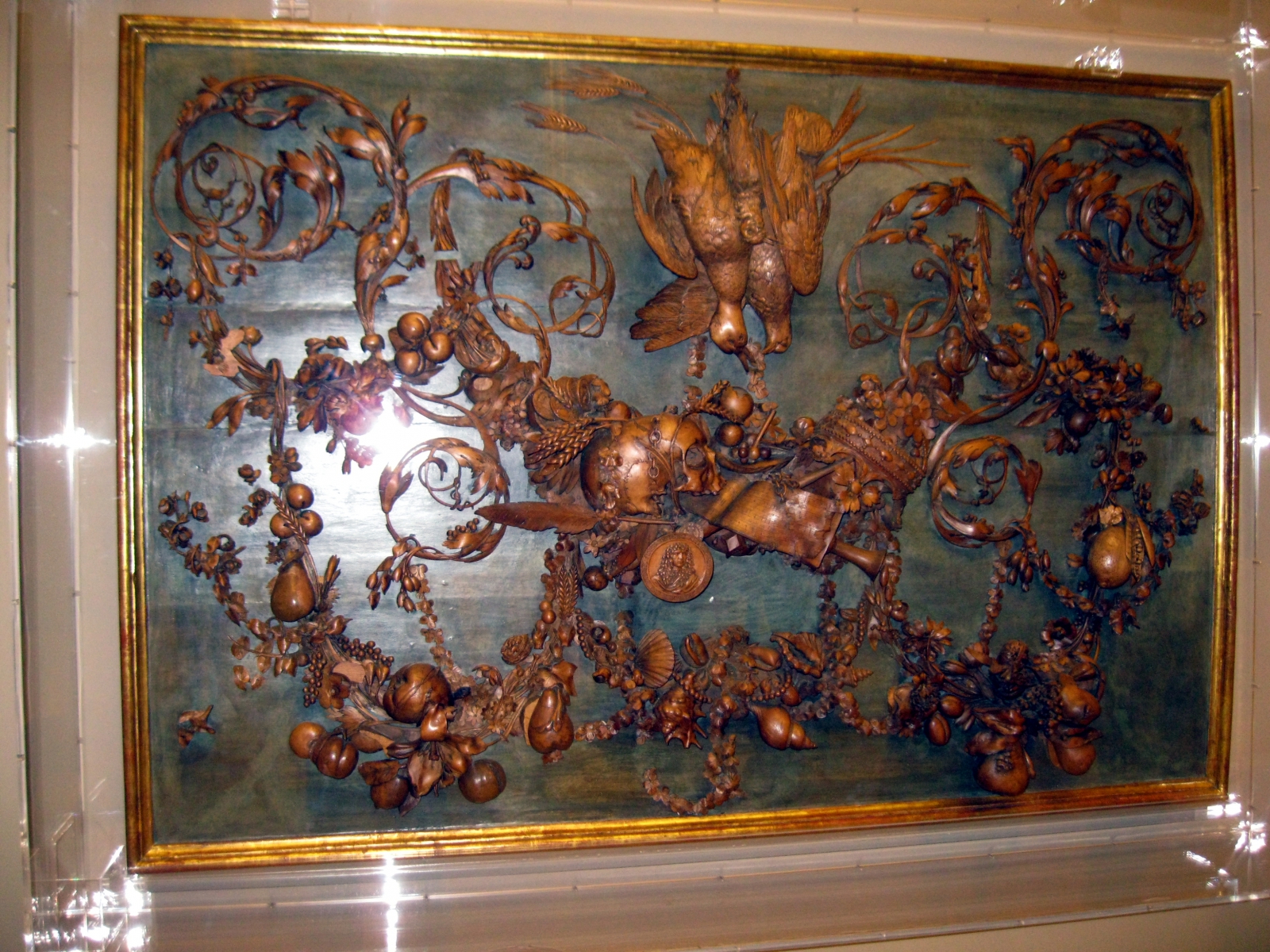
THANK YOU, Jake Backus!
In the article about St. Paul’s Church, Covent Gardens, I asked if anyone had more photos of Gibbons’ works. Jake Backus wrote that he visited the Gallerie Estensi museum in Modena, Italy in late 2016 and offered these wonderful photos.
“The Modena panel laments the triumph of death, in particular the death of kings and princes.”
— David Esterly
The panel, created around 1685, is a “momento mori” to Charles II. Charles’ brother, James II, followed him to the throne, and either James, or his wife Mary, commissioned the work. There are differing accounts of who the gift was given to in Modena. Esterly and Beard write that the panel was a gift to Mary’s father, Alfonso IV, the Duke of Modena.
The panel measures 49 inches by 69 inches, 125 cm by 175 cm.
A museum card near the panel today says that the gift was to Francesco II, or “from the collection of Francesco II.” Both may be correct, as Francesco II is the son of Alfonso IV.
The Modena piece of carving by Grinling Gibbons.
Carved lime wood on an oak panel.
From the Collection of Francesco II d’Este.
The subject of this ‘tour de force’ of carving, gift of James II Stuart of England and Maria Beatrice d’Este Stuart to Duke Francesco II d’Este, is a death memorial relating to Charles II Stuart of England (1685). Its author, the greatest specialist of this kind of work in the Baroque era, illustrates the theme of the transience of life by describing vegetable elements in minute detail – there are twenty-seven recognizable botanical varieties – game, shells, allegoric elements, as well as a piano score by Edward Coleman, with a poetic text from a drama by James Shirley. In the central medallion there is a self portrait of Gibbons himself.
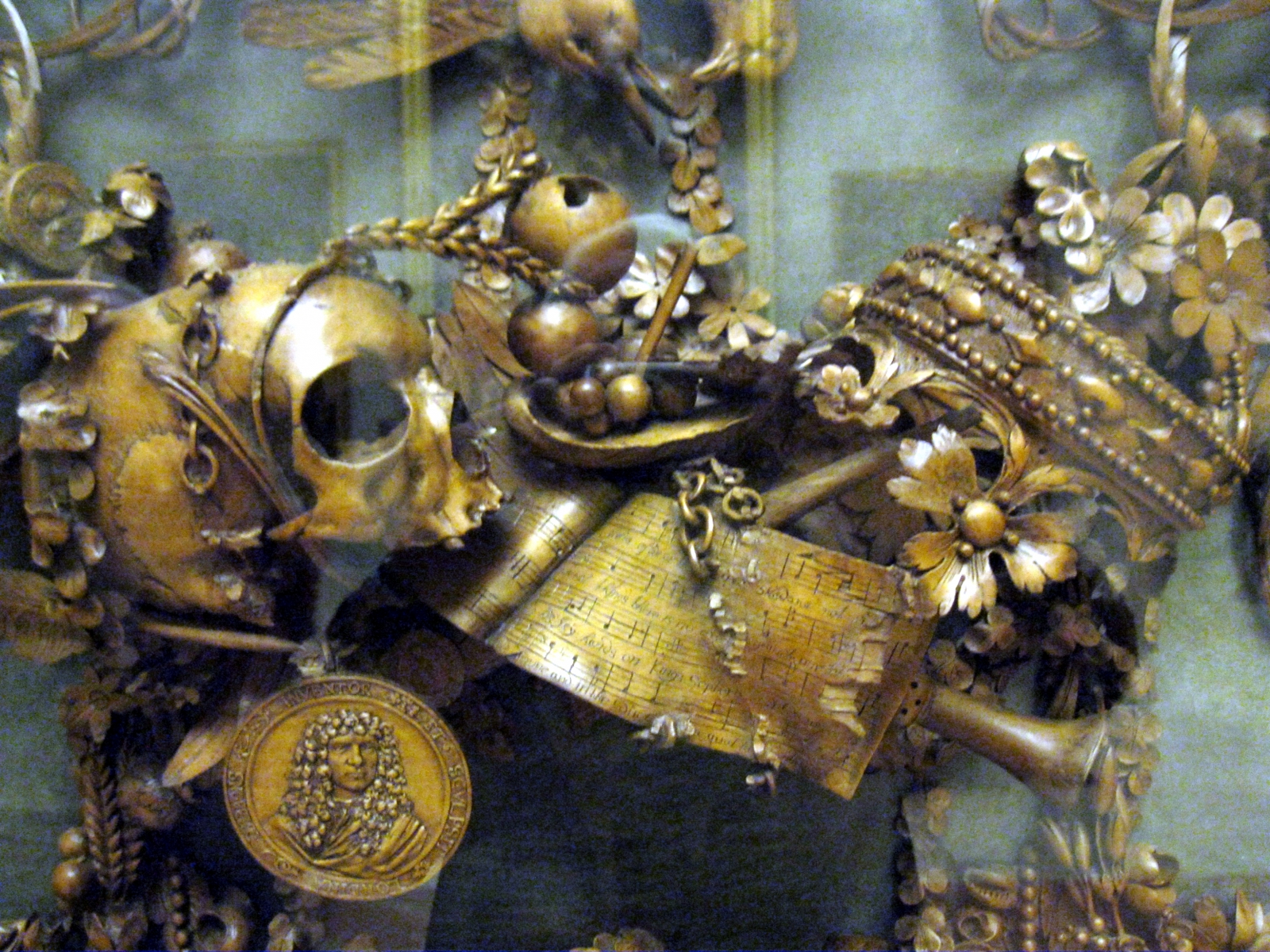
The central theme about the death of royalty is embodied in the musical score near the center of the panel. It represents the lyrics of a 17th funeral dirge by James Shirley, from his stage play “The Contention of Ajax and Ulysses.”
THE GLORIES of our blood and state
Are shadows, not substantial things;
There is no armour against fate;
Death lays his icy hand on kings:
Sceptre and crown
Must tumble down,
And in the dust be equal made
With the poor crooked scythe and spade.
The chained skull and tumbled crown are tributes to death, as are the collection of coins above and to the left of the skull. Those coins represent other kings and princes claimed by the icy hand of death.
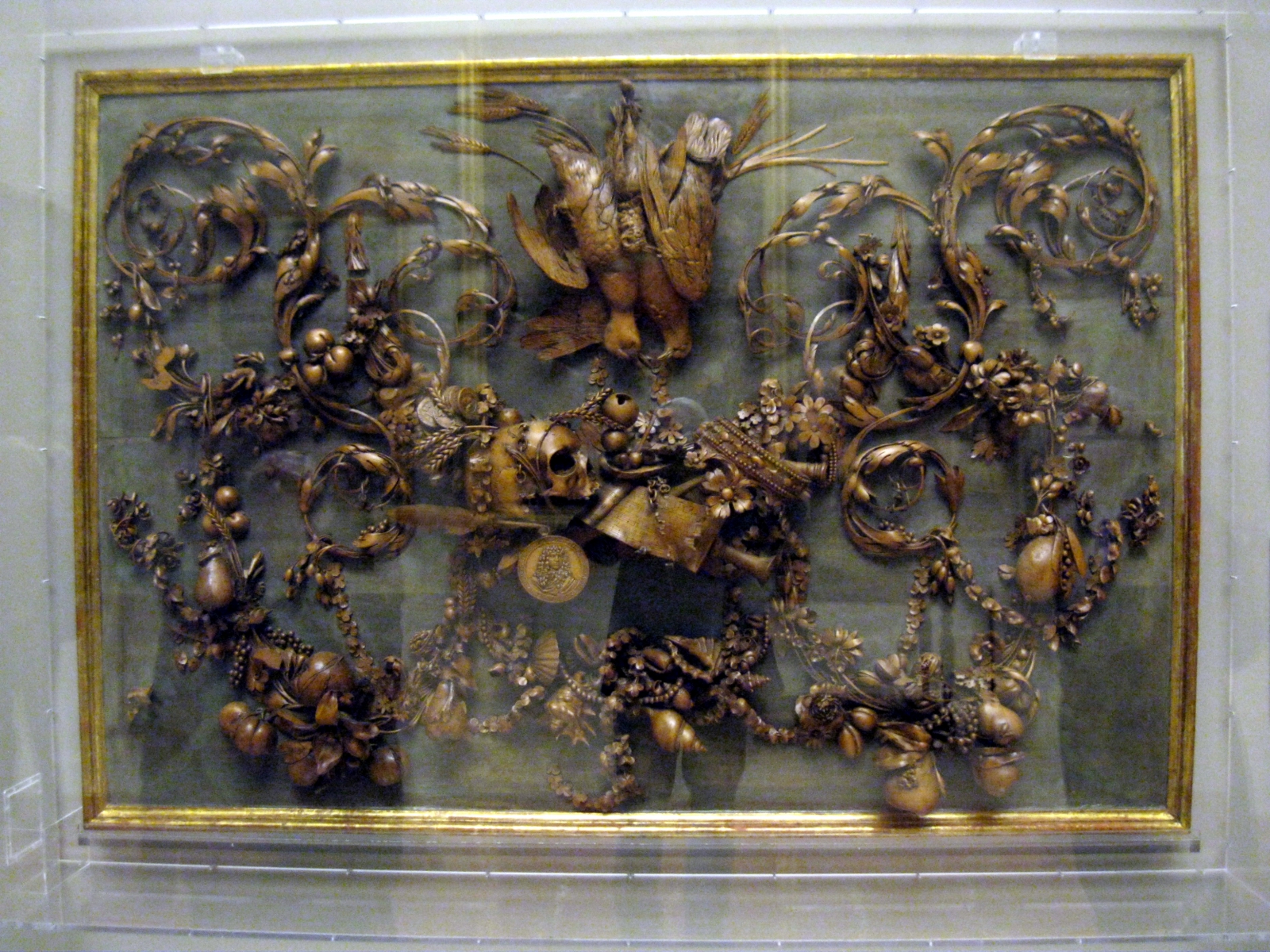
It is remarkable that of a woodcarving survives for over 300 years. It is not surprising that this one shows signs of wear and aging. If one looks closely, there are notable ghost areas on the background, where parts have disappeared. Esterly speculates that at one time the panel might also have included other objects such as a sceptre, scythe or spade (from the lyrics), perhaps in the open space above the skull. There’s also breakage on parts that extend most forward. For example, there are remnants of a chain across the musical score. What else might have been hanging from that chain? Maybe another portrait medallion?
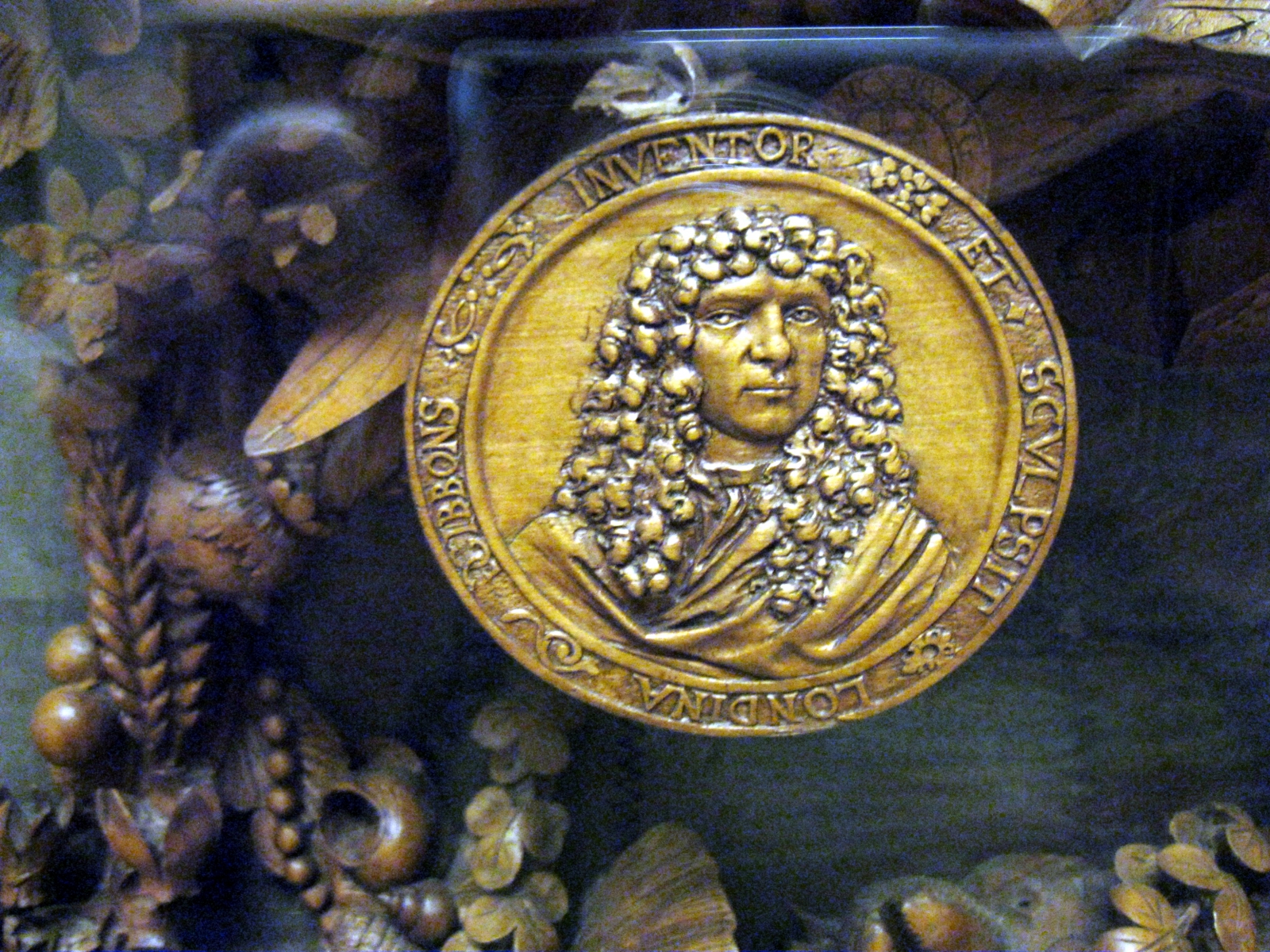
Thanks Jake, for a closeup of Gibbon’s portrait medallion. Jake says it appears to be about 2 inches (5 cm) in diameter, quite a nice piece of detail carving. With the inscription, “GIBBONS INVENTOR ET SCULPIST,” Gibbons assures us he played both the role of designer and of sculptor.
By this stage of Gibbons’ career, he was hearing criticism that he was only a simple carver. In order to clear the air of these ideas, Gibbons included a banner in the Cosimo panel proclaiming himself as the “inventor” and prominently included this Modena portrait medallion where he again asserts his design and execution roles.
One of the legends about Gibbons concerns pea pods in his carvings. The legend is that if the pea pod is open, Gibbons was commissioned and paid for the work. If closed, he was not paid. At the far right edge of the panel, Jake found for us an open pea pod.
Thanks again, Jake, for bringing us more details of Gibbons’ work. Jake apologizes for what he considers poor quality due to glass reflections. Instead, I applaud his efforts to bring us striking details despite having to contend with glass, less than optimal lighting and ghost reflections of museum visitors. Well done, and I certainly appreciate them!
We can also thank Jake’s cousin who lives near Modena and made a special trip to the museum to gather the information on the museum card and to double check their photo policy.
BTW, Jake lives way down in the southwest corner of the UK, between Truro and Falmouth “looking out to sea” as he says.
Photography note: In case a sharp eyed photographer wonders about the color difference between the two full panel shots on this page, it is this: The one at the top of the page was taken with flash, while the one in the middle used no flash.
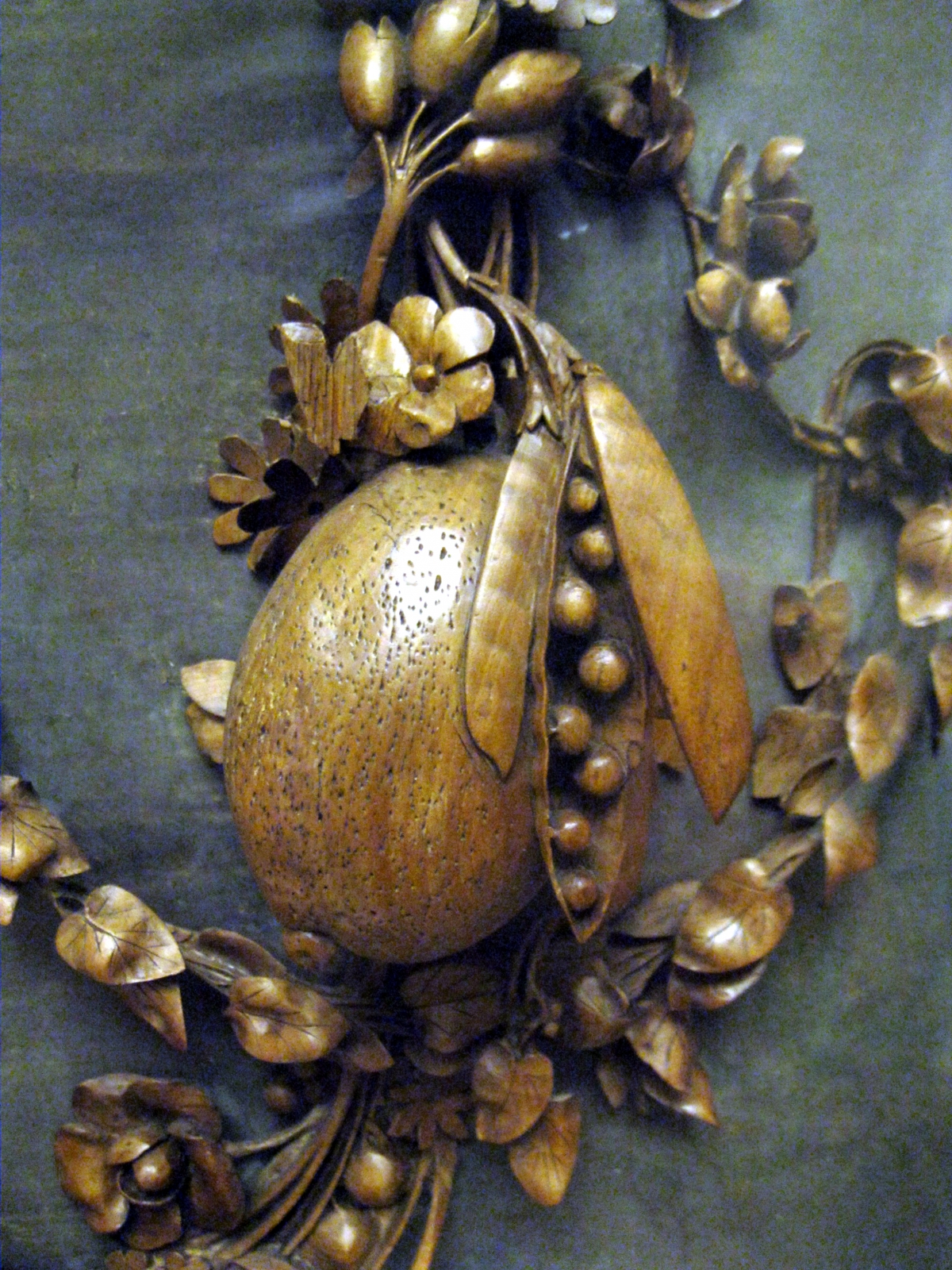
Who currently carves in the Gibbons style?
Hmmm… Maybe you should take a look at that “Carving Like Gibbons” link at the top of every page on this site.
Curious about the fruit/pea pods about 4:00 on the Modena panel. Some pics show wheat sheaves over the fruit and in some it’s missing. Any insights?
I’m not sure what you mean Kevin. All of the pictures on this page were taken by the same person in one visit. If you are comparing with other photos of the Modena panel at other sites and times, there may be differences caused by moving the artwork. The construction of some of this work was in layers with thin connections that are easily broken in the span of 300 years.
I’m guessing the wheat sheaves we from and earlier pic, is from David E first book
Ahhhh, Yes! I see what you mean. So, I’ll add another guess: During some round of restoration we find a curator saying, “That sheave looks odd, like it was glued on as an after thought. Let’s remove it.” All of these carvings have been stored and restored many times. That gorgeous reredos at St. James Piccadilly was once in about 1500 pieces on the floor of the church after the WWII London bombings, and people put it back together, and got it back together very credibly.
OTOH, here’s an interesting one. Take a look at the Cassiobury Park Picture Surround in the V&A. I once had a conversation with the Gibbons expert restorer (and V&A curator), David Luard, about the center piece at the top of that surround. He said, that yes, it was in terrible condition, that the whole thing was a mess and they made the best they could of it. As one of “our little secrets” he said “Look at the right drop. Notice how some of the fruit is ‘hanging’ at the wrong angle.” That’s because parts of that drop had been part of a section that used to be at the top of some other carving, not as a side drop.
Things aren’t always as they seem, or maybe not as originally intended. Yet, the restoration experts have done marvelous, stunning, spectacular work such as at St. James, and at Trinity College Chapel.